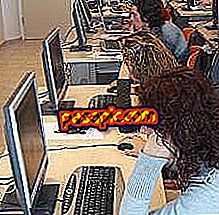What are the three vital functions

When we talk about vital functions we refer to the functions that every living being performs to maintain life. They make up a total of three and are common for all, and even unicellular living beings can perform them, because the only cell they count with is done independently. Without them it would be completely impossible to survive and all species would become extinct, since one of them is reproduction. If you want to know what the three vital functions are, keep reading this article and discover it.
Vital functions: nutrition
Nutrition is the vital function that allows us to stay alive, since it includes all those activities that all living beings carry out in order to obtain the essential material and energy to live. In order to perform correctly, nutrition is made up of several factors:
- The food Without the intake of food that provides us with the proteins and nutrients necessary to develop and grow, survival would not be possible. There are two types of nutrition: heterotrophic and autotrophic . The first one corresponds to the one used by humans and animals, and is based on the manufacture of our own material from organic matter. That is, we eat foods that can be of both animal and vegetable origin, our body digests them and reduces them to simple molecules. The digestive system plays a fundamental role in this process. While the second consists of the creation of organic matter from inorganic, such as carbon dioxide, water or mineral salts, through photosynthesis. Thus, it corresponds to the form of nutrition of vegetables.
- The circulation . This process of nutrition is vital to get matter to all parts of the body. It is done through the circulatory system, which we explain in detail in this video.
- The excretion All living beings ingest the matter and energy they need to live and expel the harmful substances, harmful or useless for them, through the body or photosynthesis, and this is done through excretion. In the case of humans and animals, we do it through urine and fecal matter, thanks to the excretory system.
- The breath We include breathing within nutrition because it is the metabolic process that allows us to have, develop and maintain all the energy we have acquired through food. It consists of the entrance of oxygen to the body and the expulsion of carbon dioxide, through the respiratory system.
Vital functions: reproduction
Reproduction is the vital function that allows us to ensure the proliferation of species. Without it, we would become extinct and make up a planet free of life. Through reproduction, living beings can generate organisms similar to themselves and thus achieve the long-term survival of the species to which they belong. There are two major types of reproduction, the sexual and the asexual.
Sexual reproduction is what requires the intervention of two individuals of the opposite sex, that is, one female and one male. It is done by joining the sex cells (ovules and spermetazoides), or gametes, of each of the individuals, which is called fertilization. This union can occur externally, in which the sexual cells are united outside the body of the individuals and the eggs, therefore, are formed outside (this is the case of many of the marine animals, for this reason this type of fertilization is produces in water); or internal, in which the male cells, sperm, must enter the body of the female through the reproductive organs, join with their gametes, ovules, and fecundate them. Thus, the fetus develops inside the body of the female (it occurs in mammals and humans).
Asexual reproduction is one in which only a single individual intervenes, typical of unicellular beings. Several types are distinguished within this branch of reproduction:
- Bipartition of a cell in two to give rise to two children, is the case of unicellular algae and protozoa.
- Fragmentation of an organism giving rise to the creation of another living being, is the case of the starfish, among others.
- Gemation, in which the parent creates a new individual through the buds that are in the plasma membrane. The father performs an unequal division of one of his cells, the smallest one passes to the yolk and another similar organism develops. This is the case of sea sponges, among others.
Vital functions: relationship
The relationship is the vital function that allows us to react and generate a response or stimulus to a certain change. When we speak of stimulus we refer to a variation of the medium, whereas when we say response we are referring to the reaction of both cells and living beings. In general, it is the stimuli that generate a response, which can be positive, when the movement goes in the same direction, or negative, if it goes in the opposite direction. A clear example of stimulation can be the sensation of hunger, whose positive response would be the instinct and act of hunting to feed.
Thanks to the perception of changes in the environment (stimuli), both internal (of our own body) and external (environment), and elaboration of responses to these stimuli, it is possible to guarantee survival, since it is what makes possible the relationships between them and with the environment.


